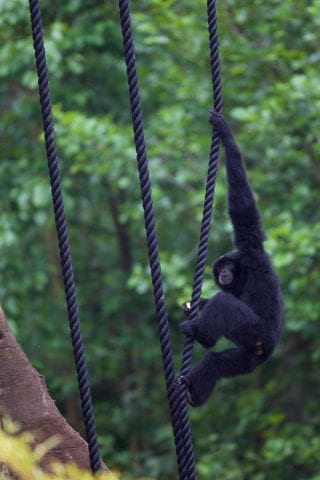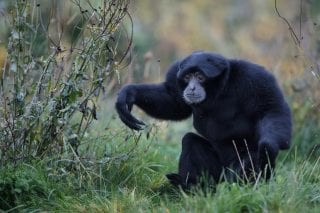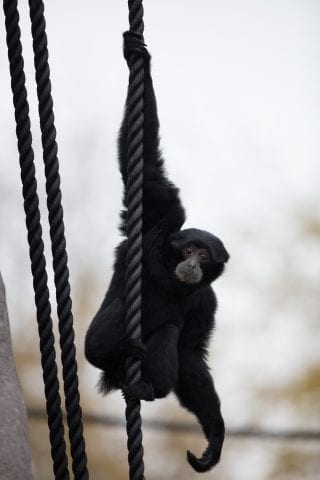Fun facts
Communication
Gibbons call and sing to establish their territory and to reinforce family or mating bonds. Siamang gibbon calls are louder than those of other gibbons.
All thumbs
Siamangs are the only gibbons with both opposable thumbs and opposable toes.
Gardeners of the Rainforest
Siamangs have an important role in their forest habitat. When they eat the fruit of one tree, they spread seeds through their poo, leading to more trees growing elsewhere, and a healthier tree population.



